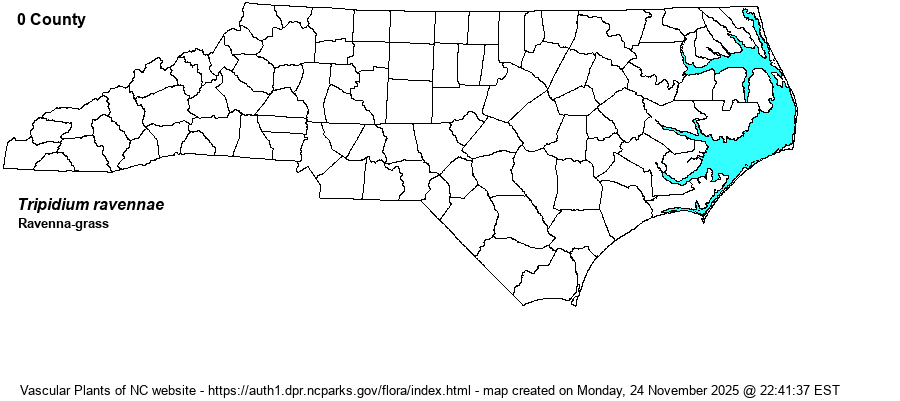Show/Hide Synonym
| taxonName | relationship | relatedTaxonName | relatedTaxonRefText | relComments |
|---|
| Tripidium ravennae | = | Saccharum ravennae | Flora of North America (1993b, 1997, 2000, 2002a, 2002b, 2003a, 2004b, 2005, 2006a, 2006b, 2006c, 2007a, 2009, 2010) | | | Tripidium ravennae | = | Saccharum ravennae | Kartesz (1999) | | | Tripidium ravennae | = | Saccharum ravennae | Wunderlin & Hansen Flora of Florida (3) | | | Tripidium ravennae | = | Erianthus ravennae | Fernald (1950) | | | Tripidium ravennae | > | Erianthus ravennae var. ravennae | Hitchcock & Chase (Manual of US Grasses) | | | Tripidium ravennae | > | Erianthus ravennae var. purpurascens | Hitchcock & Chase (Manual of US Grasses) | | | Tripidium ravennae | = | Ripidium ravennae | | | | Source: Weakley's Flora |
|

